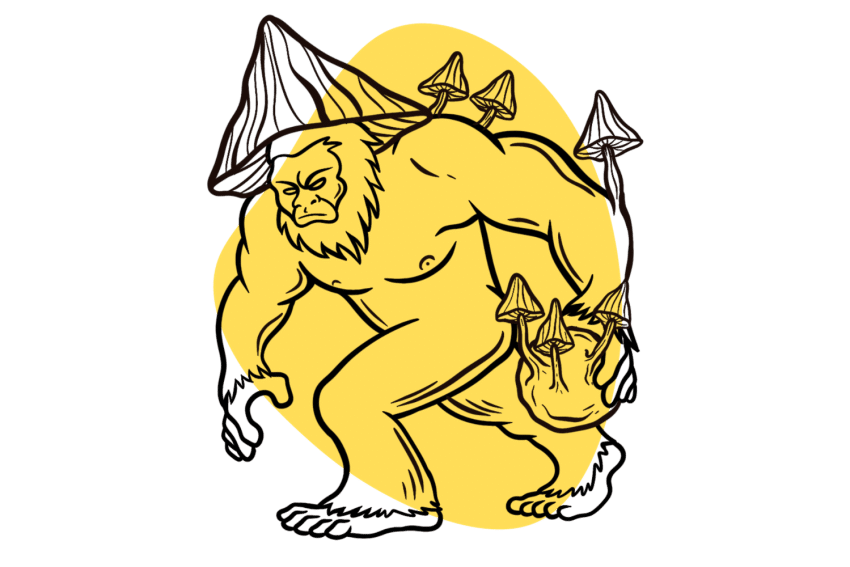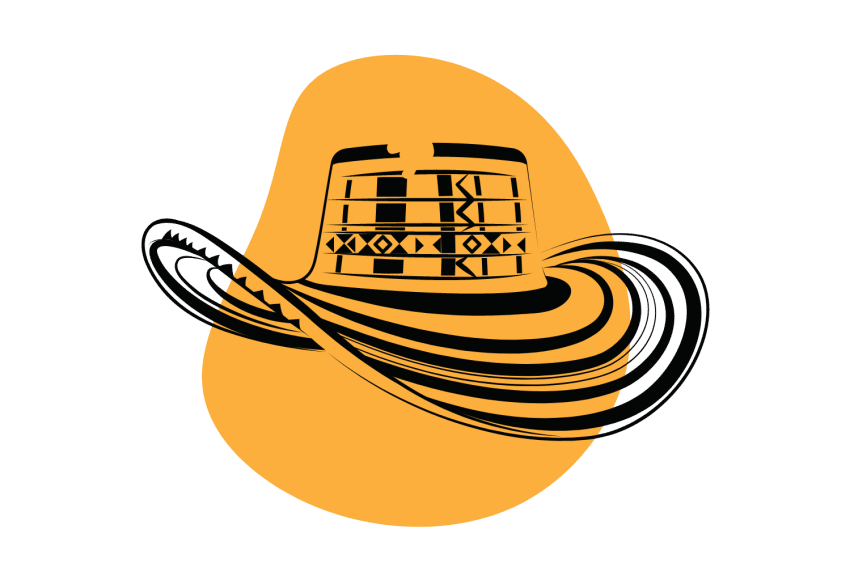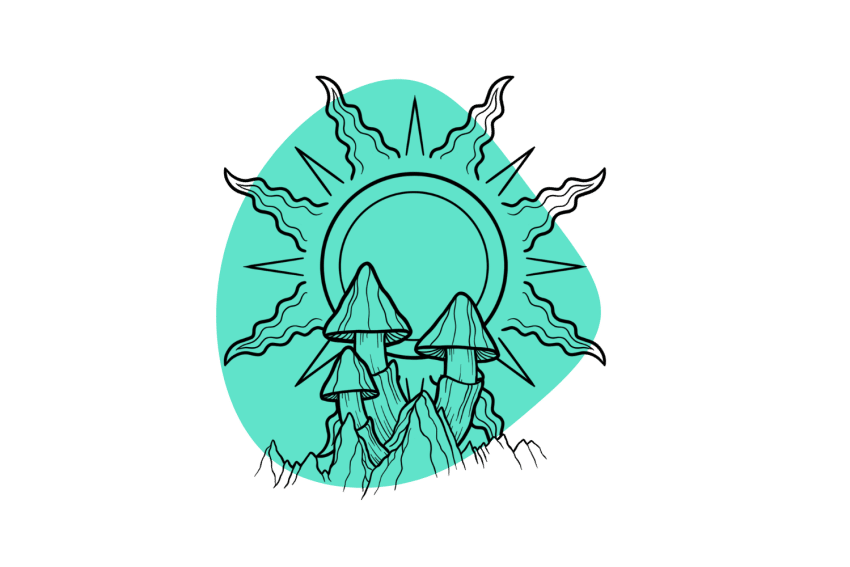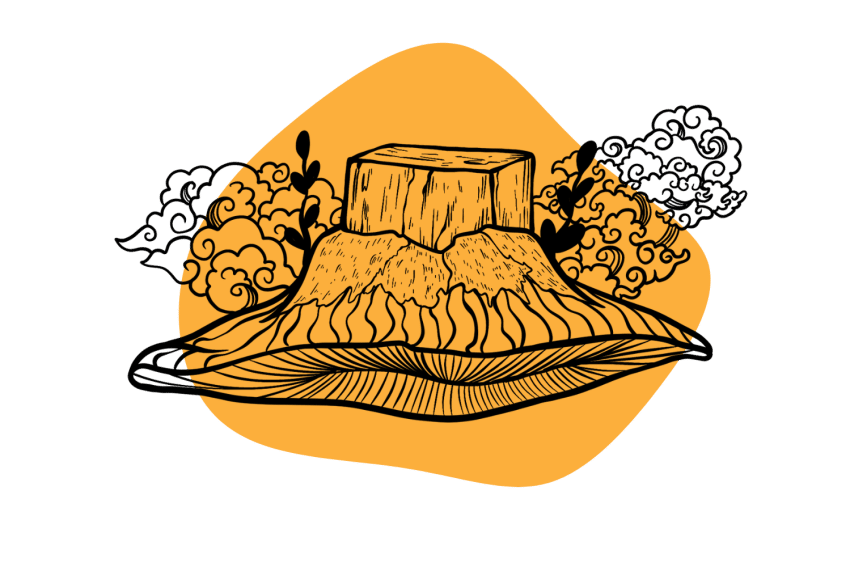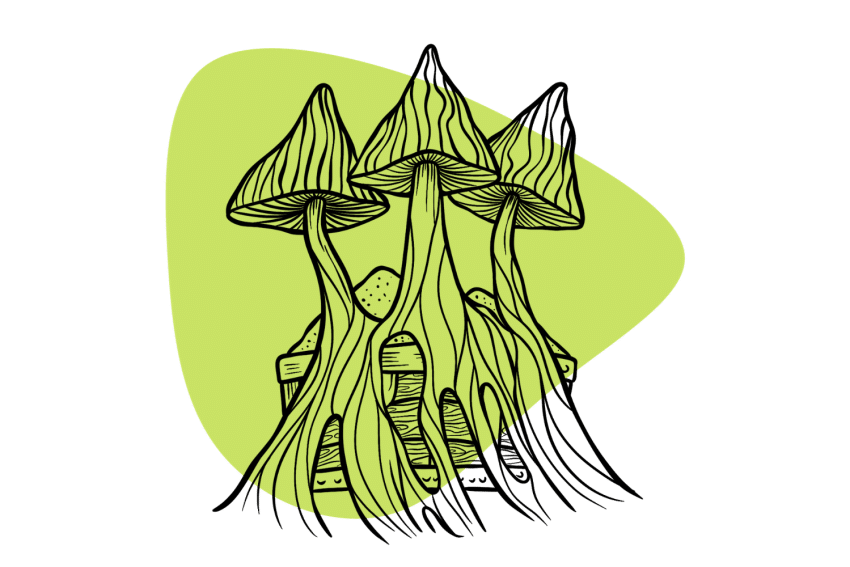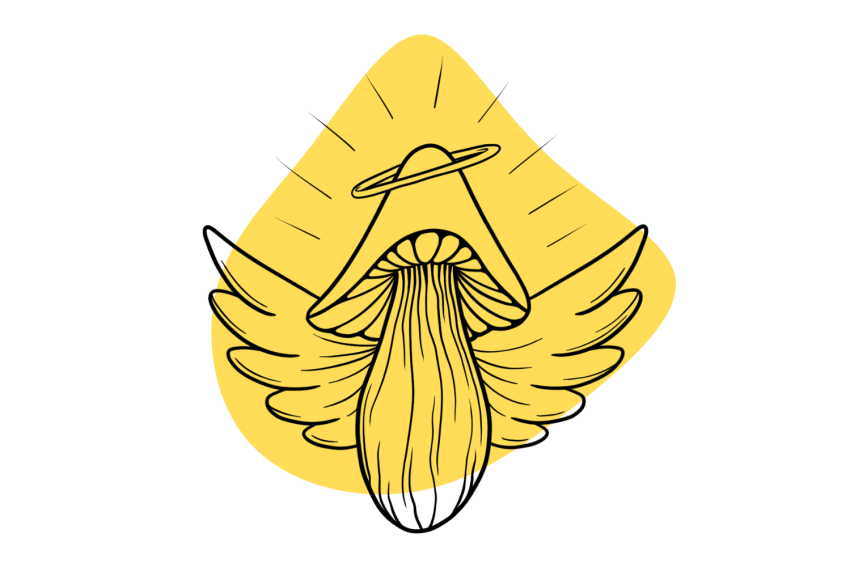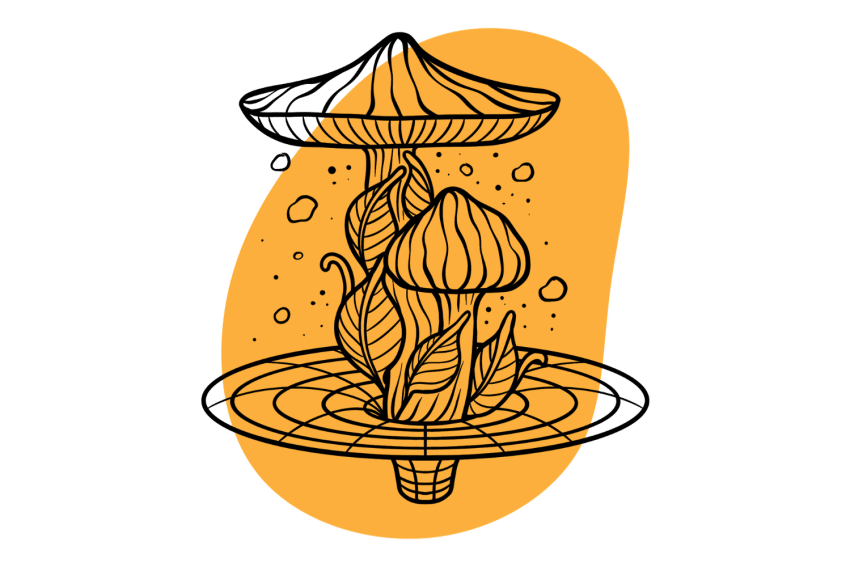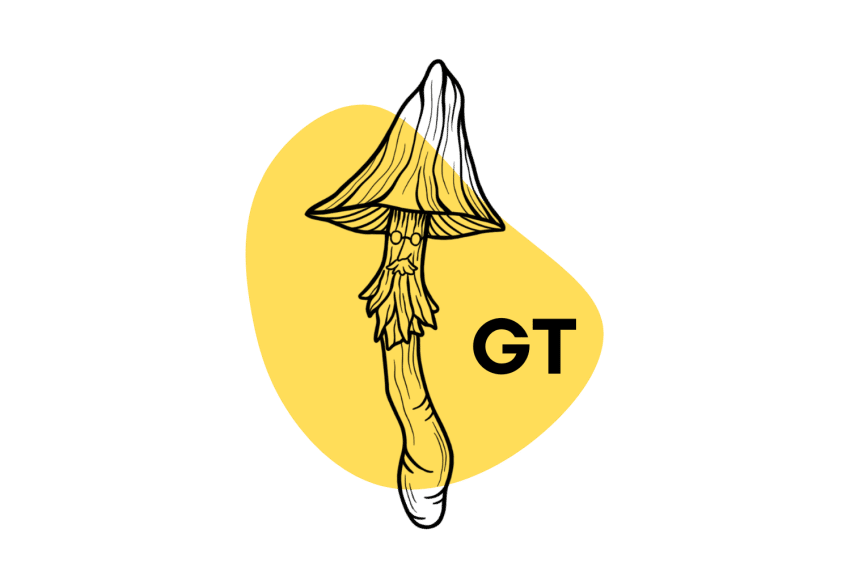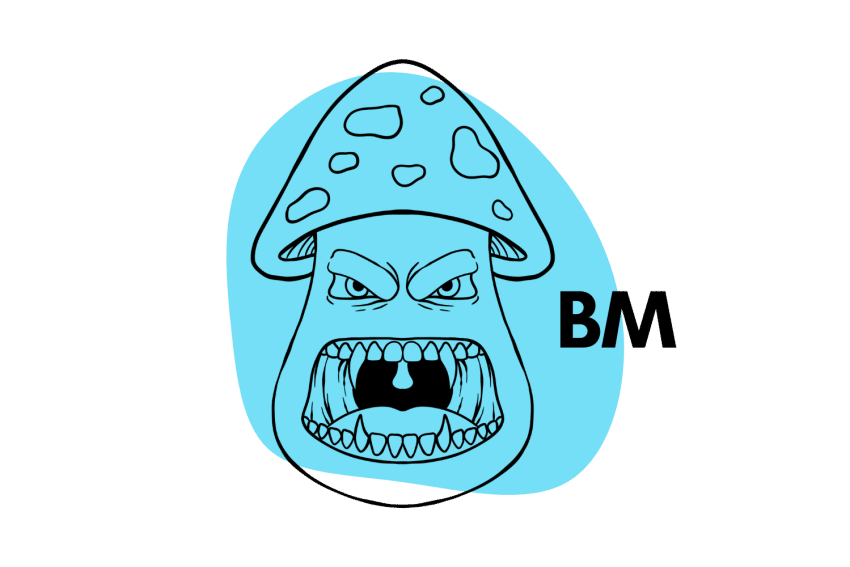The Thai Magic Mushroom Strain: A Psychedelic Journey to the Heart of Thailand
The Thai strain is a resilient Southeast Asian strain that’s perfect for beginner cultivators. Ready to find out how?
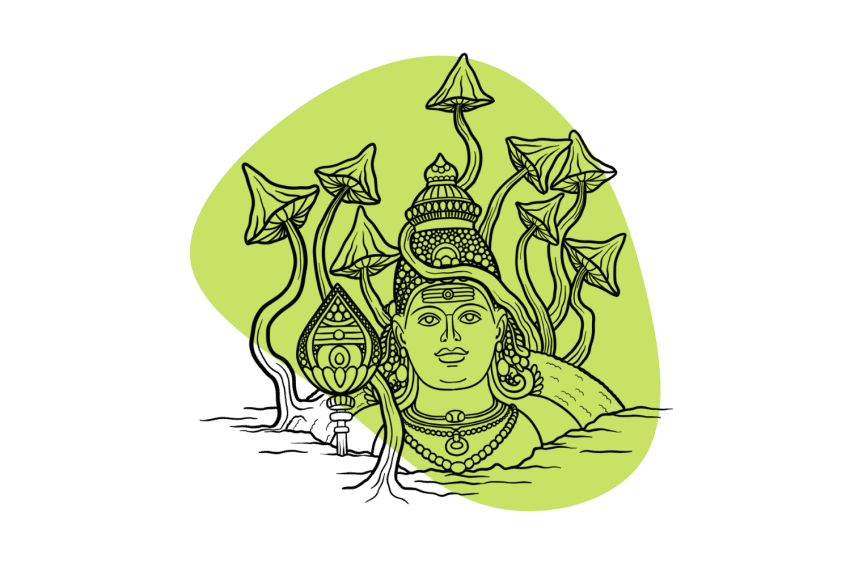
Thai shrooms are often confused with the many strains of Psilocybe cubensis discovered in Thailand.
The famous mycologist John Allen discovered this shroom growing on the island of Koh Samui, close to the infamous Koh Samui strain.
Although the Thai strain is relatively similar to the Koh Samui strain, it has some distinct growth characteristics that set it apart. The main difference between them is that Thai is far less likely to produce “Fatasses” — mushrooms that are short and fat in appearance.
The Thai strain produces rounded caps that are golden-brown in color and light, creamy-white stems that are relatively thick but not as much as the Thai Koh Samui strain. The caps gradually flatten out as they mature, and if left to sporulate, they become convex.
Many people also confuse this strain with another Thai variety called Lipa Yai. The two are incredibly similar, but the Lipa Yai strain seems to produce thinner and taller fruiting bodies.
The Thai strain is a close relative of the other strains discovered by John Allen on the island of Koh Samui. It shares genetics with the Koh Samui, Ban Hua Thanon, Lipa Yai, Ban Thurian, and Ban Phang Ka strains.
Related: Magic Mushrooms Strain Guide
This well-rounded P. cubensis strain has several qualities that make it ideal for the beginner cultivator. Although it’s not a challenging strain to cultivate, the more experienced cultivators in the mushroom community love it.
It’s contamination resistant, can grow in an unoptimized environment, can produce good yields through several healthy flushes, and the mushrooms hold average to above average potency.
Let’s look at the origins of the Thai strain, its potency, genetic profile, some of its relatives, where to find spore samples, and how to cultivate its spores.
Thai Strain Specs
| Potency | Average 🍄 |
| Cultivation | Easy |
| Species | Psilocybe cubensis |
| Substrate Recommendation | Rye Grain, Bird Seed, BRF |
| Sold By | Spores 101 (🇺🇸/🇨🇦), Miracle Farms (🇺🇸/🇨🇦), Sporeslab (🇨🇦), The Magic Mushrooms Shop (🇪🇺) |
History of the Thai Strain
John Allen found the Thai strain growing on the tropical island of Koh Samui — an area particularly rich in psychedelic mushrooms. The original sample was found growing alongside several other popular strains that Allen brought back to the United States.
This strain shares genetics with the other strains that were discovered on the island — all of them share similar growth characteristics.
Thailand, and the island of Koh Samui in particular, has a rich culture of psychedelic use. The island is swamped with several kinds of Psilocybe cubensis, and you can find people selling “magic” foods and drinks across the land.
You’ll find everything from magic mushroom smoothies to mushroom-topped pizzas on Koh Samui — all popular among the psychotourists that travel there.
Koh Samui is also famous for its full moon parties, where people let loose and party over the night of the full moon until the sun comes up the following day. Hundreds of locals and tourists across the island use magic mushrooms during these parties.
Potency & Psilocybin Content
We’ve classed the Thai strain as average in terms of potency — with a total tryptamine content of 0.75% (combined levels of psilocybin, psilocin, baeocystin, and various other tryptamine derivatives). The effects can be pretty intense at doses of around 2.5 grams. So far, the most potent sample submitted to the Oakland Hyphae Psilocybin Cup was 0.91% total tryptamines — submitted in the Spring 2021 competition by “Fractured Ego.”
Those are some pretty good stats, especially when you compare them to other easy-to-grow strains, such as Golden Teacher, which typically test at around 0.73% total tryptamine overall.
Users can expect vivid closed- and open-eye visuals and intense waves of energy and euphoria when taking the Thai strain magic mushrooms. The effects and potency are comparable to other Thai strains, such as the Koh Samui strain. This can be seen in test data as well. Koh Samui and the Thai strain share similar psilocybin and psilocin levels.
Variations & Genetic Relatives
The Thai strain was discovered growing on the island of Koh Samui in Thailand. This island is packed with several different strains of Psilocybe cubensis. Many of these strains share similarities in their characteristics.
Here are some of the close relatives and genetic variants of the Thai strain:
1. Koh Samui (KS)
John Allen discovered the Koh Samui strain during his travels through Southeast Asia in the 90s. It’s named after the island it was discovered on.
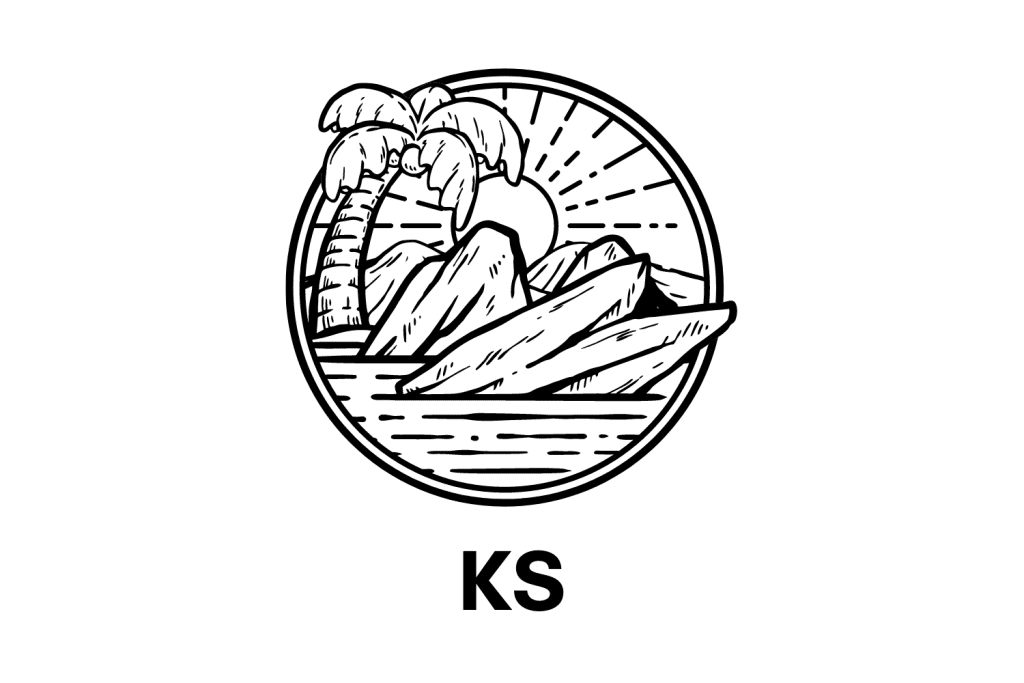
This strain is famous for producing “fatasses” — short mushrooms with thick stems. It’s also surprisingly potent for a Southeast Asian strain, with samples entered into the Oakland Hyphae Psilocybin Cup producing over 0.80% total tryptamines.
The Koh Samui strain is contamination resistant, can thrive in unoptimized conditions, and can produce several dense flushes of healthy fat shrooms. This is an excellent strain for the beginner and expert cultivator alike.
2. Ban Hua Thanon (BHT)
The Ban Hua Thanon strain is yet another Southeast Asian strain discovered on the island of Koh Samui by John Allen in the 1990s. This strain is renowned for its strong resistance to contamination and high temperatures.
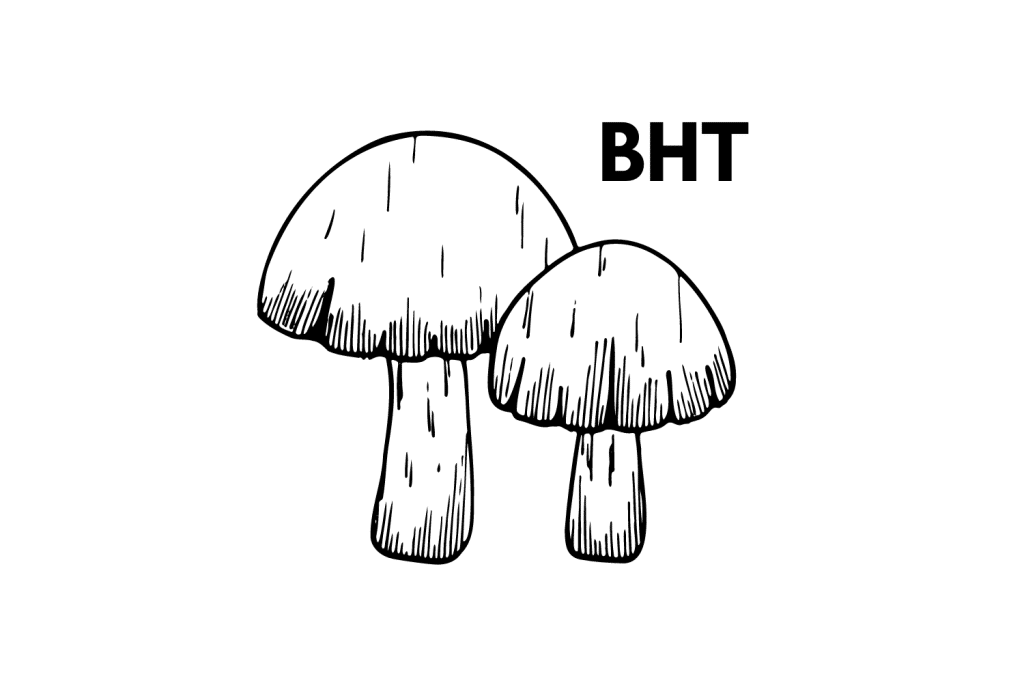
It’s a pretty basic-looking shroom with long white stems and golden brown caps. The mushrooms are medium-sized and grow in dense clusters. This strain has average to above average potency depending on the conditions it’s grown in.
The Ban Hua Thanon strain is another fantastic choice for the beginner cultivator with limited experience.
3. Lipa Yai (LY)
The Lipa Yai strain shares several growth characteristics with the Koh Samui strain, but instead of producing fatasses (short, fat shrooms), it grows tall, thin fruiting bodies. The Lipa Yai strain shares several appearance qualities with the Thai strain and looks uncannily similar.
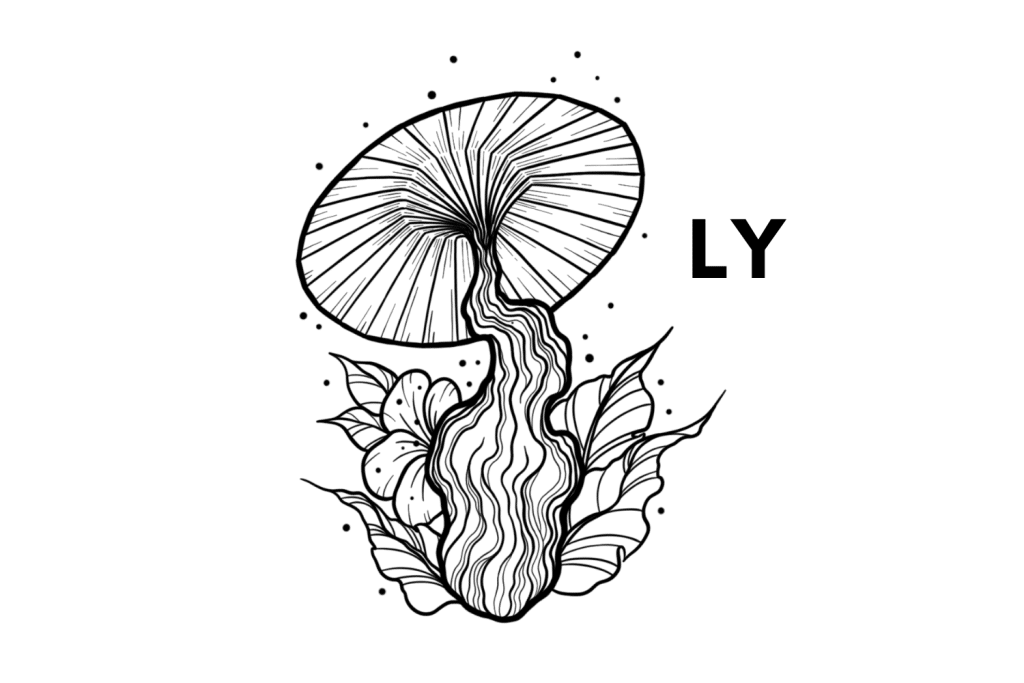
The Lipa Yai strain’s mushrooms have light brown caps and creamy-white stems. They are medium-sized and grow in dense clusters. Good yields are possible over several healthy flushes.
This strain is also contamination-resistant and can cope in an unoptimized growing environment. It’s a good choice for the beginner cultivator that wants to grow an average to above-average potency strain.
4. Ban Phang Ka (BPK)
Here’s another one John Allen discovered on Koh Samui’s island. The Ban Phang Ka strain has all the typical traits of a Southeast Asian shroom — excellent contamination resistance, it can thrive in poor growing environments, is an aggressive colonizer, and fruits extremely fast.
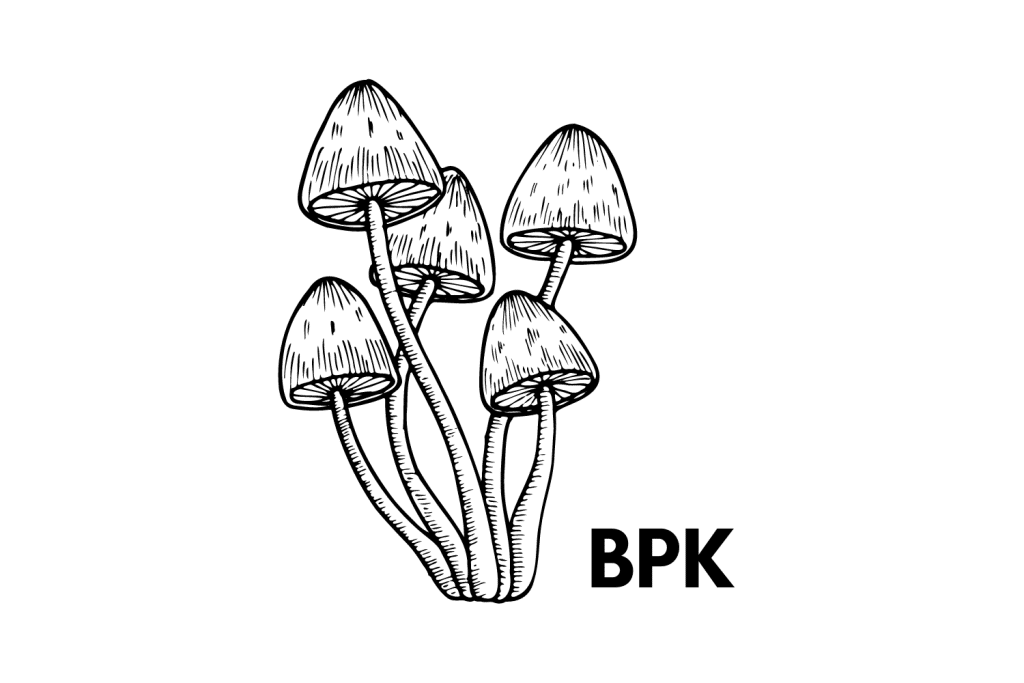
The Ban Phang Ka strain is similar to Ban Hua Thanon and the Thai strain but has one key difference. This strain produces impressively large fruits, especially for a Thai strain.
Spores can be hard to find, but if you manage to source some good genetics, you can expect good yields of large mushrooms easily and quickly.
5. Ban Thurian (BT)
The Ban Thurian strain, unsurprisingly, was discovered by “Mushroom” John Allen on the island of Koh Samui during his travels in the 90s. This strain is basic in potency and appearance, but it has all the traits of a good beginner strain.
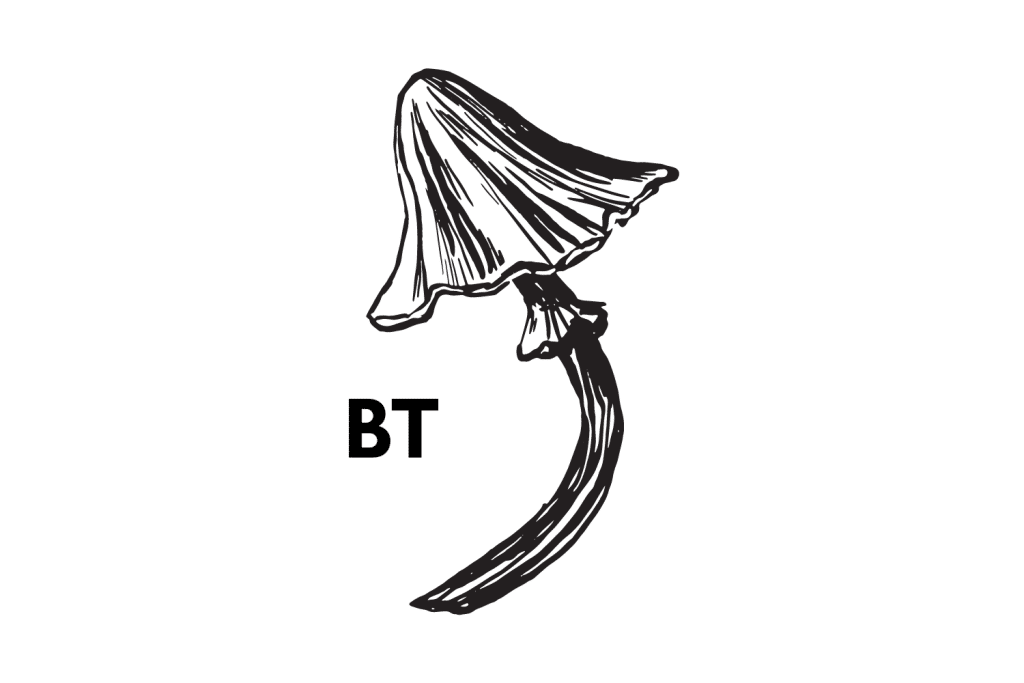
It’s easy to grow, is contamination-resistant, and can thrive in unoptimized growing environments. Ban Thurian does well on basically any substrate as long as it’s properly sterilized. This is an ideal shroom for commercial growers or people who want to produce large numbers of shrooms at home.
The Ban Thurian strain can give dense clusters of medium-sized mushrooms in as little as three weeks. Several flushes are possible, with good results from each.
Where to Buy Thai Strain Spores
The Thai strain is relatively common, and most established vendors in the United States, Canada, and Europe sell the spores. You can find this strain either as spores or ready-made grow kits from just about any reputable supplier.
Here are some of our all-time favorites depending on where you live:
- If you live in the United States — Spores 101, Miracle Farms
- If you live in Canada — Spores 101, Sporeslab, Planet Spores
- If you live in Europe — The Magic Mushrooms Shop (🇪🇺), Shiny Spores (🇬🇧)
→ View all spore vendors & grow kit suppliers
How to Grow Thai Strain Mushrooms
Like many of the strains collected from Southeast Asia, Thai mushrooms are contamination resistant and can thrive in unfavorable conditions. They are effortless to cultivate, even for beginners with limited experience and equipment.
The best way to cultivate Thai mushrooms if you’re relatively new to mushroom cultivation is by using the PF-Tek method. This cultivation technique is simple to grasp and requires little knowledge or expensive equipment.
You will need a few basic things to make this cultivation technique work, but you can buy all of the equipment from hardware stores, garden centers, and pet shops. The whole kit shouldn’t cost much more than 60 dollars or so.
PF-Tek utilizes glass jars to hold substrate for the mycelium to colonize. Fill the jars with substrate — rye grain, bird seed, or BRF (brown rice flour) cakes are ideal for the Thai strain. Then sterilize it in a pressure cooker.
Once the jars have been sterilized and cooled, you can carefully innoculate the substrate with the live spore solution from inside your Thai strain spore syringe. Then seal the jars and leave them in a dark place above 68 degrees Fahrenheit (20 degrees Celsius) for two to three weeks.
After two to three weeks, you’ll see active mycelium. A white, spider-web-looking material should cover the substrate. Remove the mycelium cakes and place them inside a simple homemade fruiting chamber.
The cakes will then begin to fruit, producing mushrooms over several weeks. Harvest the mushrooms as they mature but before they drop spores. Eventually, the mycelium cakes will succumb to mold, and mushroom growth will cease.
If you want to learn how to properly grow Psilocybe cubensis mushrooms using this technique, read through our guide on how to cultivate magic mushrooms. Here you will learn the process step-by-step, as well as how to create some of the essential pieces of equipment for PF-Tek.
Other Beginner Magic Mushroom Strains
The Thai strain is notoriously easy to cultivate, even for the beginner with limited experience and knowledge. Most strains from Thailand are easy to grow, but there are other options if you’re a beginner looking for your first magic mushroom to cultivate.
If you’re interested in other great beginner strains, have a look at these:
1. Golden Teacher (GT)
Golden Teacher is one of the most popular strains of Psilocybe cubensis. The strain’s origins are unknown, but it’s believed that the first sample was collected somewhere in the Gulf region of the United States. It’s been circulating the market since the early 80s, and it’s a favorite among beginner cultivators.
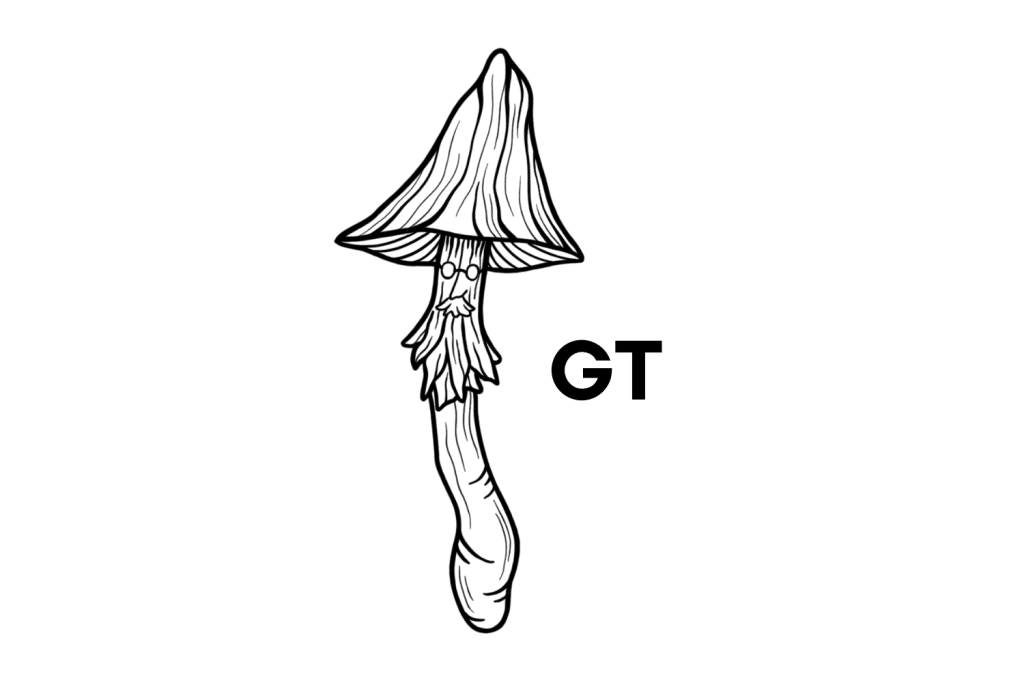
Golden Teacher is a resilient strain and can grow in unoptimized conditions. It’s an easy strain to grow regardless of how experienced the cultivator is.
This is a well-rounded strain that doesn’t have a particularly exciting appearance or potency, but the fact that it’s easy to grow, fast to colonize, and gives great yields makes it attractive.
2. B+Strain (B+)
The B+ Strain is a classic that was developed by the legendary Mr. G — a frequent Shroomery user and experienced cultivator. Apparently, the B+ strain is a hybrid of Psilocybe cubensis and Psilocybe azurescens. However, this is likely not the case because the resulting product doesn’t produce fertile offspring when two species are hybridized.

Regardless of the confusion with the origins of this strain, it’s a classic shroom with some excellent qualities. It’s resilient to cold conditions and contamination and can produce good yields.
This is a great beginner strain, but it does take a little longer to grow than most others. For the patient person, B+ is well-worth waiting for. It produces large mushrooms of above-average potency.
3. Cambodian (CMB)
The Cambodian strain is another popular beginner strain. Like many Southeast Asian Psilocybe cubensis strains, this strain is resistant to contamination and can thrive in unoptimized conditions. It produces mushrooms with above-average potency and has notoriously dense flushes.
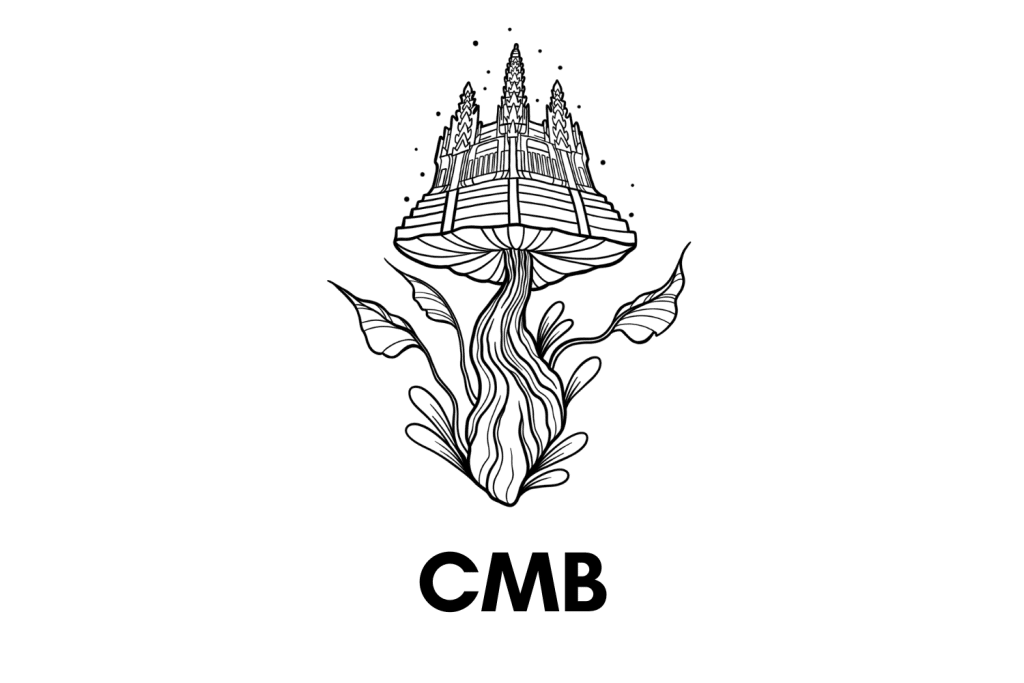
The infamous “Mushroom” John Allen discovered this one during his travels through Southeast Asia in search of new strains in the 1990s. Since its discovery, the Cambodian strain has become quite popular. Most large spore vendors carry it.
Strains vs. Species: What’s the Difference?
The Thai strain is a strain of the species of fungi Psilocybe cubensis. There are hundreds of different species of magic mushrooms, all with several different strains within them.
P. cubensis is, without a doubt, the most popular species of psychedelic fungi. Within this species exist hundreds of different strains, including the Thai strain. Although the Thai strain differs greatly from other strains, for example, Penis Envy, they belong to the same species.
A strain is simply a genetic variant of a single species. A species is a group of organisms that are closely related on a biological level. Although strains can vary in biological makeup, strains of a single species have the same baseline building blocks and can crossbreed or exchange genetics for creating fertile offspring.
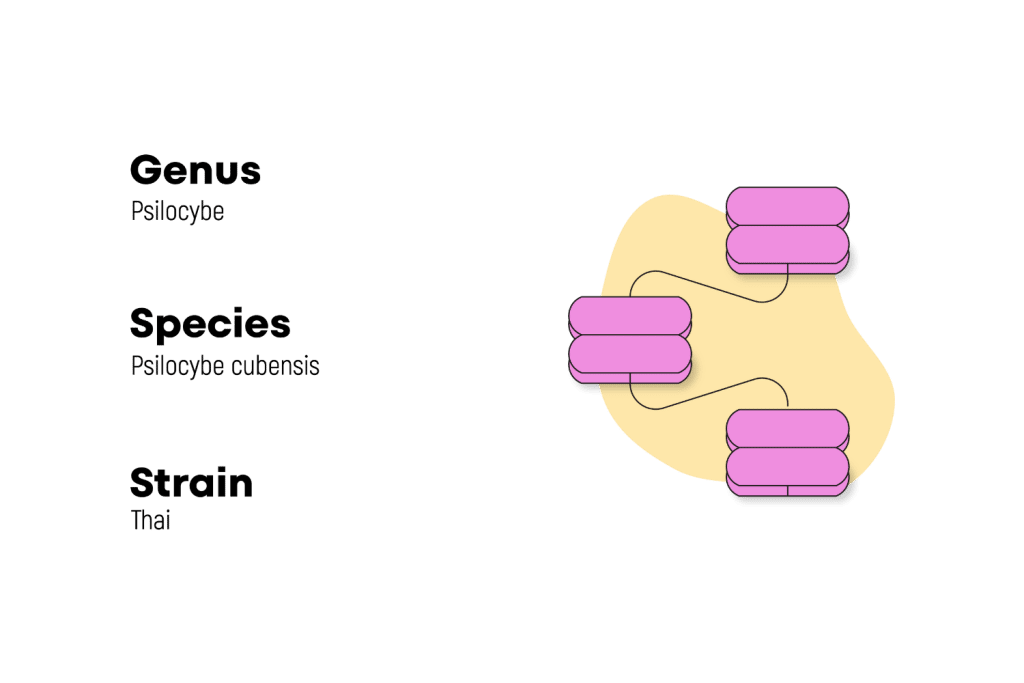
Strains are apparent in several species across all six kingdoms (Eubacteria, Archaea, Protista, Fungi, Plantae, and Animalia). These genetic variants can occur naturally, but we also intervene with certain species to create strains with desirable traits that benefit us in some way.
Strains that humans have created are apparent in many of the kingdoms.
You can see this clearly in the Psilocybe cubensis species, where we’ve created super potent strains through cross-cultivation. You can see it in the Cannabis sativa species, where we’ve made around 1,000 strains through crossbreeding. You can also see it in the Canis familiaris species, where we’ve created thousands of dog breeds.
Here are a few examples of strains within a selection of different species in the fungi, plant, and animal kingdoms:
| Species | Strain 1 | Strain 2 | Strain 3 | Strain 4 |
| Psilocybe cubensis | Koh Samui Strain | Penis Envy | Golden Teacher | Kathmandu Strain |
| Cannabis sativa | Lemon Haze | Sour Diesel | Hindu Kush | Blue Cheese |
| Canis familiaris | Jack Russel Terrier | Border Collie | Dalmatian | German Pointer |
| Cyprinus rubrofuscus | Kohaku | Showa Sanshoku | Chagoi | Taisho Sanke |

